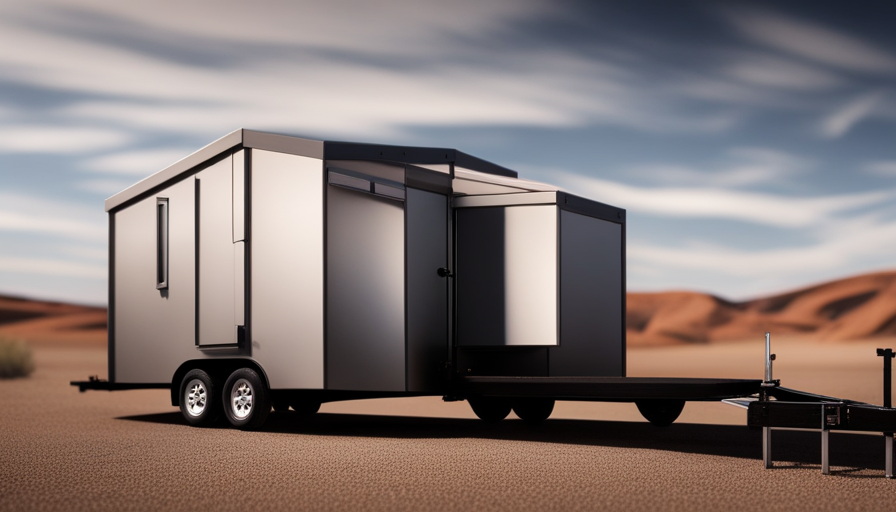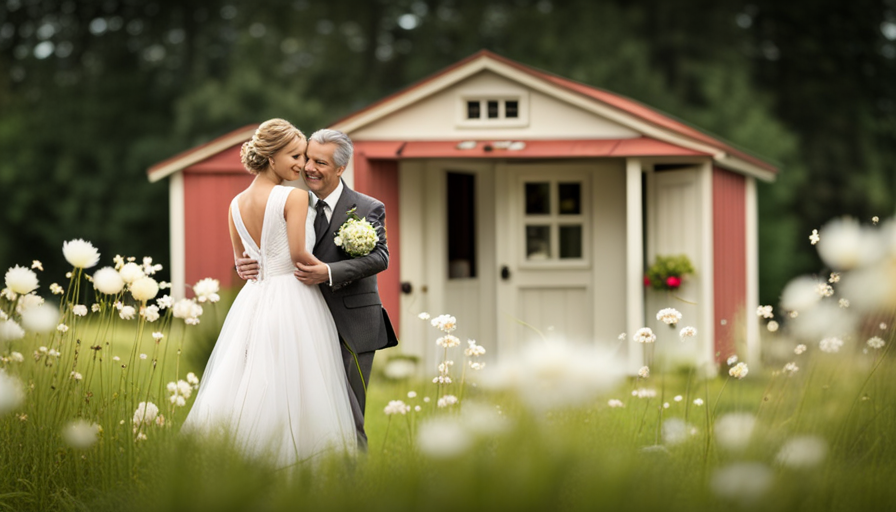The rise in popularity of short-term accommodations has dramatically increased recently, with Airbnb leading the way in offering unique and affordable lodging options for travelers. A noteworthy trend in this sector is the growing demand for small house rentals. However, concerns have arisen about potential market saturation, as properties that are consistently available are struggling to book reservations through online platforms.
Despite this, the potential for revenue in the tiny house rental market remains viable, particularly in the wake of the pandemic, which has triggered a rise in the purchase of rural homes for rental purposes. The demand for non-traditional rentals such as tiny houses, campers, and glamping sites has also increased, indicating that there is still a market for unique and affordable accommodations.
To succeed in this market, hosts must conduct thorough research of the area and competition, offer unique selling points, and avoid overextending themselves. This article will explore the viability of Airbnb tiny house rentals in light of these trends and provide tips for hosts looking to succeed in this space.
Key Takeaways
- The short-term rental industry, including the popular Airbnb platform, has witnessed a rise in demand for non-traditional rental options such as tiny houses, campers, and glamping sites.
- While concerns have been raised about oversaturation in the market and the sustainability of tiny house rentals, the potential for revenue in the tiny house rental market remains viable.
- To succeed in the non-traditional short-term rental market, hosts must conduct thorough research on the local area and competition, identify unique selling points, adjust pricing strategies accordingly, offer extra experiences to improve customer retention, and avoid overextension.
- The rural rental market has also seen growth, with the pandemic triggering a rise in the purchase of rural homes for rental purposes.
Short-term Rental Industry
The short-term rental industry appears to be oversaturated based on the observations made on hosting forums and the struggle for fully booked properties to secure bookings on online booking services. Despite this, the revenue potential in the industry remains viable.
In fact, Airbnb witnessed growth in gross nights booked outside of urban areas in 2022, which suggests that there is still a demand for short-term rentals in non-urban areas. The pandemic has also triggered a rise in the purchase of rural homes for rental purposes. This further supports the argument that the short-term rental industry still has a revenue potential.
However, there are concerns about whether tiny houses for rent will survive the influx of new hosts, especially given the increased interest in non-traditional rentals such as tiny houses, campers, and glamping sites. To succeed in this industry, it is important to research the area and competition to find unique selling points and adjust prices accordingly.
Additionally, offering an extra experience can improve the success of short-term rentals. It is advisable to stick with a successful business model and avoid overextending oneself.
Non-Traditional Rental Trends
Interest in alternative short-term rental options such as small dwellings, recreational vehicles, and luxurious camping accommodations has increased in recent years. This trend is partly due to the pandemic, which has led to a rise in the purchase of rural homes for rental purposes.
The appeal of non-traditional rentals lies in the unique and memorable experiences they offer to travelers seeking something different from traditional hotels and resorts.
Among these alternative rental options, tiny houses have gained significant popularity. They offer travelers a chance to experience minimalist living and a closer connection to nature.
However, with the surge of new hosts entering the short-term rental market, concerns have been raised about the sustainability of tiny house rentals.
As the rural rental market continues to grow, it will be interesting to see how the tiny house rental market responds and whether it can continue to attract travelers seeking unique and authentic experiences.
Tips for Success
One strategy for achieving success in the non-traditional short-term rental market, such as Airbnb tiny house rentals, is to conduct thorough research on the local area and competition. This research will help hosts identify unique selling points, such as the proximity to popular tourist attractions or the inclusion of certain amenities, that can set their properties apart from others in the market. Additionally, hosts can use this research to adjust pricing strategies to remain competitive and attract more bookings.
To improve customer retention, hosts can offer extra experiences that enhance the rental experience. This can include offering guided tours of the local area, providing bicycles for guests to use during their stay, or partnering with local businesses to offer discounts on activities and services.
It is also important for hosts to stick with a successful business model and avoid overextending themselves by taking on too many properties or offering too many services that may not be sustainable in the long run.
By implementing these marketing strategies and focusing on customer retention, hosts can increase their success in the non-traditional short-term rental market.
Frequently Asked Questions
What are the most popular locations for tiny house rentals on Airbnb?
According to recent data, the Top Tiny House Destinations on Airbnb are primarily located in the United States, with many of the most popular destinations being rural areas or scenic locations.
Rising Popularity in the tiny house rental market has led to an increase in interest for unique and unconventional vacation experiences.
However, it is important to note that the popularity of tiny house rentals has also led to increased competition among hosts.
As a result, hosts should consider offering unique amenities or experiences to set themselves apart from competitors.
Additionally, hosts should conduct thorough research to determine the appropriate pricing strategy for their property, taking into account the competition in the area.
How has the pandemic affected the demand for tiny house rentals?
The COVID-19 pandemic has had a significant impact on the demand for tiny house rentals.
With remote work becoming the norm, many people are seeking affordable yet comfortable living arrangements outside of urban areas.
Tiny houses offer a unique solution to this demand, as they are often more affordable than traditional homes and provide a sense of comfort and coziness.
However, the affordability vs comfort debate remains a concern for some renters, as tiny houses may not offer the same level of amenities as larger homes.
Despite this, the interest in non-traditional rentals such as tiny houses, campers, and glamping sites has increased during the pandemic, indicating a potential for growth in the industry.
Are there any legal issues or regulations surrounding tiny house rentals?
Zoning restrictions and insurance requirements are two major legal issues that can affect the ability to rent out a tiny house.
Zoning restrictions vary by location and can limit the use of a tiny house as a rental property, depending on the area’s zoning designation.
Insurance requirements are another important consideration, as many insurers do not offer coverage for tiny homes or may require specific safety features to be installed.
Additionally, local regulations may require hosts to obtain permits or comply with safety and sanitation standards.
Hosts should research and understand all relevant regulations and requirements before listing their tiny house for rent to avoid legal issues and potential liabilities.
What amenities should hosts consider including in their tiny house rentals?
According to a report by Airbnb, hosts who maximize space in their tiny house rentals can significantly improve their booking rates. Incorporating creative storage ideas and eco-friendly features such as sustainable options can enhance the guest experience and set the rental apart from others in the market.
Additionally, hosts should consider providing amenities such as comfortable sleeping arrangements, kitchen facilities, and outdoor spaces to maximize the limited living area. By understanding the unique needs of their guests and offering a well-designed and functional space, hosts can increase their chances of success in the competitive short-term rental market.
How can hosts effectively market their tiny house rentals to stand out among the competition?
To effectively market their tiny house rentals, hosts should focus on two key strategies: social media promotion and unique interior design.
Social media platforms such as Instagram and Facebook offer hosts the opportunity to showcase their properties and reach a wider audience. By regularly posting high-quality photos and engaging with followers, hosts can build a strong online presence and attract potential guests.
In addition, hosts should consider investing in unique and eye-catching interior design elements that set their property apart from the competition. This could include features such as custom-built furniture, statement lighting, or bold color choices.
By combining these two strategies, hosts can increase their visibility and appeal to guests seeking a memorable and unique vacation experience.
I’m Theodore, and I love tiny houses. In fact, I’m the author of Tiny House 43, a book about tiny houses that are also tree houses. I think they’re magical places where imaginations can run wild and adventures are just waiting to happen.
While tree houses are often associated with childhood, they can be the perfect adult retreat. They offer a cozy space to relax and unwind, surrounded by nature. And since they’re typically built on stilts or raised platforms, they offer stunning views that traditional homes simply can’t match.
If you’re looking for a unique and romantic getaway, a tree house tiny house might just be the perfect option.
















